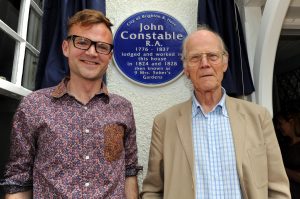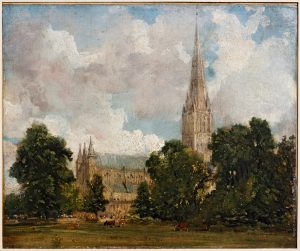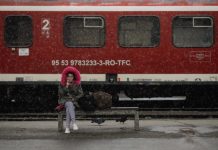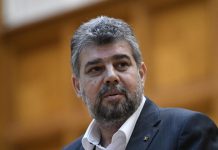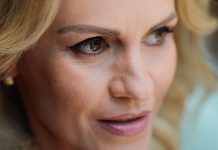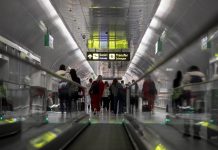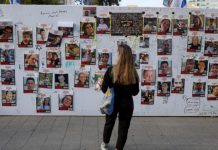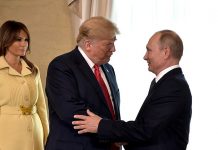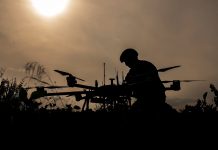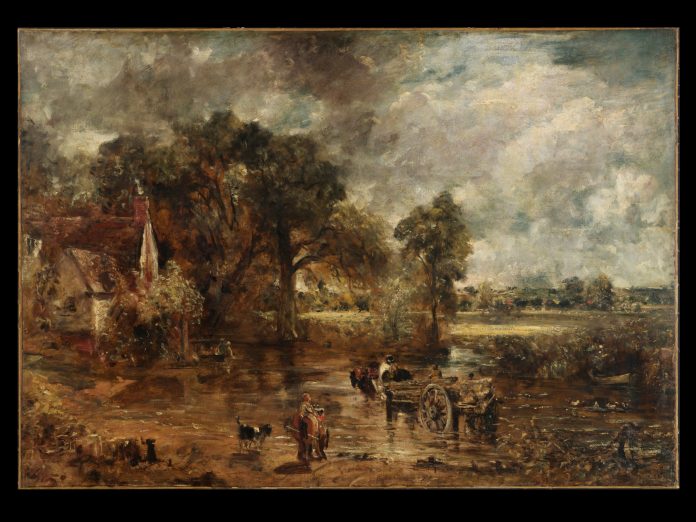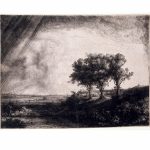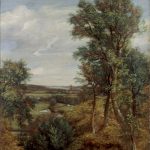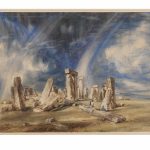British Artist John Constable, (1776-1837), is currently on display at the Dacia Palace, Bucharest with an exhibition of 54 works by Constable and a further 23 by those that influenced him, the old masters of Durer, Rubens, Rembrandt, Claude, Waterloo, and Constable’s contemporaries Girtin, Gainsborough, Cozens, Wilson and Turner.
The V&A John Constable Seeking Truth Exhibition at Art Safari, Bucharest is curated by Dr. Emily Knight and Katharine Martin from a selection of paintings chosen by Dr. Mark Evans ( Former Head of Paintings Collections at the V&A) as a result of discussions by Peter Harrap, artist and curator who provided the British Council/ Romanian Cultural Institute liaison on the Constable exhibition in Bucharest from 2016 onward.
Peter Harrap, 47, is a British Romanian Artist and Curator who discovered (with Shan Lancaster) that his house and studio was also John Constable’s, 9 Mrs Sober’s Gardens from 1824- 1828. He curated ‘Constable and Brighton ; Something out of Nothing’ in 2017 at Brighton Museum,
It is an exhibition of around 100 works of John Constable’s time in Brighton from 1824-1828.
John Constable RA was the son of a successful mill owner, and he was expected to go into the family business. In a succession of correspondence, Constable rejected the plans his family had for him. He also rejected any attempts to point him towards gainful practical uses of his artistic ability.
His scenes around the Suffolk countryside derive from his childhood experience growing up around the agrarian landscape of Colchester and East Bergholt. Over the summer of 1796 Constable went to stay with his uncle in Edmonton. The ideas reflected in this Seeking Truth exhibition are essentially Constable’s thoughts about painting from the books, prints and advice that he gleaned from the Edmunton Circle particularly J. T Smith (Keeper of the British Museum Prints and Drawings Collection) and the painter John Cranch.
The Seeking Truth exhibition opens with a glorious walking sequence made up from Constable’s paintings from around the Dedham Vale, and the lock and mill as he moves through the landscape from East Bergholt and Flatford and on toward the family home and Willy Lot’s house which features in Constable’s most famous painting ‘The Haywain’ (V&A full sketch version , Fig 1). The exhibition title and context comes from a letter of 29th May 1802. The letter along with Constable’s idiosyncratic spelling is printed in full for a thorough explanation of his aims and ambitions in 1802:
London 29th May 1802
My dear Dunthorne,
I hope I have done with the business that brought me to Town with
Dr. Fisher. It is needless now to detail any particulars as we will make them
the subject of some future conversation–but it is sufficient to say that had
I accepted the situation offered it would have been a death blow to all my
prospects of perfection in the Art I love.
For these few weeks past I beleive I have thought more seriously on my
profession than at any other time of my life–that is, which is the shurest
way to real excellence. And this morning I am the more inclined to men-
tion the subject having just returned from a visit to Sir G. Beaumont’s
pictures,-I am returned with a deep conviction of the truth of Sir Joshua
Reynolds’s observation that „there is no easy way of becoming a good
painter.” It can only be obtained by long contemplation and incessant
labour in the executive part.
And however one’s mind may be elevated, and kept up to what is
excellent, by the works of the Great Masters -stil Nature is the fountain’s
head, the source from whence all originally must spring- and should an
artist continue his practice without refering to nature he must soon form
a manner, & be reduced to the same deplorable situation as the French
painter mentioned by Sir J. Reynolds, who told him that he had longceased
to look at nature for she only put him out.
For these two years past I have been running after pictures and seeking
the truth at second hand. I have not endeavoured to to represent nature
with the same elevation of mind–but have neither endeavoured to make
my performances look as if really executed by other men.
I am come to a determination to make no idle visits this summer or to
give up my time to common place people. I shall shortly return to Bergholt
where I shall make some laborious studies from nature–and I shall en-
deavour to get a pure and unaffected representation of the scenes that may
employ me with respect to colour particularly and any thing else-drawing
I am pretty well master of.
There is little or nothing in the exhibition worth looking up to-there is
room enough for a natural painture. The great vice of the present day is
bravura, an attempt at something beyond the truth. In endeavouring to do
something better than well they do what in reality is good for nothing.
Fashion always had, & will have its day–but Truth (in all things) only will
last and can have just claims on posterity.
I have received considerable benefit from exhibiting-it shows me where
I am, and in fact tells me what no body else could. There are in the exhibi-
tion fine pictures that bring nature to mind–and represent it with that
truth that unprejudiced minds require.
These are reflexions that at this time I should have written for my own
use -but as I know that I could not write to you on a subject that would
be more agreable, I send you them as a letter.
And indeed I have had much ado to keep my mind together enough to
write to be understood owing to a reumatick pain in one side of my head,
particularly in my teeth and lower jaw, which has caused one cheek to
swell very much. I beleive I got cold at Windsor as I was there in the late
severe weather.
Should you want any thing in the pencil way &c let me know next week
for I hope the next to leave London.
Remember me kindly to your wife & beleive me
to be sincerely yours
The exhibition focuses on Constable’s letter to John Dunthorne taking the phrase ‘ seeking truth at second hand‘. In the letter Constable berates himself for not finding his own voice and looking too much to other painters for inspiration. The exhibition unpacks this idea of Seeking Truth into five categories.
Sense of place
Inspiration
Close Observation.
The Leaping Horse in focus.
Collaboration and Creativity.
Peter Harrap (D.O.B 1975) is British Romanian Artist and Curator who discovered (with Shan Lancaster) that his house and studio was also John Constable’s, 9 Mrs Sober’s Gardens from 1824- 1828[1}. He curated ‘Constable and Brighton; Something out of Nothing’. 2017 at Brighton Museum, An exhibition of around 100 works of John Constable’s time in Brighton from 1824-1828. [2]Harrap lectured on Constable’s ‘Walking to Ruins ’ at the George Enescu National University of the Arts, Iasi Romania in November 2021, and at the Royal Academy of Arts London February 2022 and at the Romanian Cultural Institute, London, July 2022 on ‘Grigorescu vs Constable’ on behalf of the British Council, Paul Mellon, and the Tate British Art Network. He is currently a PhDc at the George Enescu University of the Arts Iasi Romania and also as a researcher at SSEES, UCL.
Harrap formally proposed a Constable exhibition to Bucharest MNAR Director Calin Stegarean in 2016 (Nigel Bellingham British Council present) Ioana Ciocan Art Safari at the ICR London in 2017 ( Magda Stroe ICR present) and (2 May 2018) to Dr Mark Evans V&A. Art Safari engaged the V&A directly in a contract partnership in 2021. The resulting exhibition is ‘Seeking Truth’ John Constable, V&A/ Art Safari.
